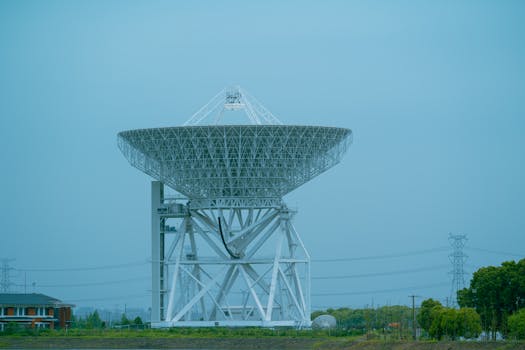
The Future of Connectivity: Latest Breakthroughs in Satellite Telecommunications
The future of connectivity is rapidly evolving, and satellite telecommunications is at the forefront of this revolution. With the increasing demand for global connectivity, satellite telecommunications has become a vital component in providing internet access to remote and underserved areas. In this article, we will explore the latest breakthroughs in satellite telecommunications and how they are shaping the future of connectivity.
Introduction to Satellite Telecommunications
Satellite telecommunications involves the use of satellites in orbit around the Earth to transmit and receive data, voice, and video signals. This technology has been around for several decades, but recent advancements have made it more efficient, affordable, and accessible. Satellite telecommunications has become a critical component in providing connectivity to areas where traditional fiber-optic or wireless networks are not available.
Latest Breakthroughs in Satellite Telecommunications
Several recent breakthroughs have significantly improved the capabilities of satellite telecommunications. One of the most notable advancements is the development of high-throughput satellites (HTS). HTS satellites offer faster data speeds and greater capacity than traditional satellites, making them ideal for applications such as broadband internet access, video streaming, and mobile connectivity. Another significant breakthrough is the use of low-Earth orbit (LEO) satellites. LEO satellites operate at an altitude of around 1,200 kilometers, which is much lower than traditional geostationary satellites. This lower altitude reduces latency and improves signal strength, making LEO satellites ideal for real-time applications such as video conferencing and online gaming.
Advantages of Satellite Telecommunications
Satellite telecommunications offers several advantages over traditional connectivity methods. One of the most significant benefits is its ability to provide connectivity to remote and underserved areas. Satellite telecommunications can reach areas where traditional fiber-optic or wireless networks are not available, making it an ideal solution for rural or disaster-stricken areas. Another advantage of satellite telecommunications is its reliability. Satellites are less prone to outages and disruptions than traditional networks, making them a reliable option for critical applications such as emergency services and financial transactions.
Challenges and Future Directions
Despite the advancements in satellite telecommunications, there are still several challenges that need to be addressed. One of the most significant challenges is the high cost of launching and maintaining satellites. The cost of launching a satellite can be prohibitively expensive, making it difficult for smaller companies or organizations to enter the market. Another challenge is the issue of latency. While LEO satellites have reduced latency, it is still a significant issue for real-time applications. To address these challenges, researchers and developers are exploring new technologies such as reusable launch vehicles and advanced propulsion systems. These technologies have the potential to significantly reduce the cost of launching and maintaining satellites, making satellite telecommunications more accessible and affordable.

